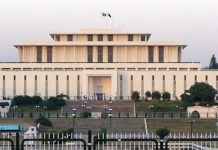Kaynat Siddique
Punjab’s fertile plains have long been home to cities that carry centuries of cultural, political and spiritual heritage. Among these lies Chunian, a city whose roots stretch back nearly two centuries and beyond. While modern urban centers like Lahore, Faisalabad and Multan dominate contemporary discussions, Chunian quietly stands as a reminder of Punjab’s layered history. Its mosques, temples and neighborhoods echo the architectural diversity of bygone eras, while its myths, legends and ruins connect the present with a rich past.In its early days, the mighty River Beas flowed beside Chunian, not only serving as a lifeline for agriculture and trade but also inspiring poets and writers with its romantic atmosphere. Today, though the river has dried up, traces of its old course can still be seen, silently telling stories of a once-thriving riverine culture.
How Chunian acquired its name has been a subject of folklore and debate. Two dominant stories circulate. The first attributes the name to Chuni, daughter of Raja Todar Mal, the famed finance minister of Emperor Akbar. Following her father’s death, Chini ruled the region and the city came to be associated with her name. Over time, “Chini” transformed into “Chunian.” Interestingly, another town nearby Kanganpuris said to have been named after Chini’s sister, Kangan, reinforcing the tale’s credibility.The second version ties Chunian’s origins to Sufi traditions. It suggests that a woman disciple of the saint Kamal Shah settled in the area and her name also Chuni was immortalized in the city’s title. While the first story enjoys wider acceptance, both illustrate how history and spirituality often intertwine in Punjab’s towns.
The historical landscape of Chunian is not limited to Mughal legends. Archaeological findings suggest that its roots may go as far back as the Indus Valley Civilization. In the 1970s, local historian Syed Husain Zaidi discovered pottery fragments, copper coins and even a gold bead in nearby mounds. Experts later confirmed these artifacts to be more than 200 years old and they were placed in the Lahore Museum for preservation.From these discoveries, historians deduced that Chunian may once have been a peaceful manufacturing hub, producing swords and helmets for Mughal armies. Local lore even claims that the city has been destroyed and rebuilt seven times, reflecting both the resilience of its people and the challenges of surviving waves of invasions and migrations.
Its association with Syed Waris Shah, the celebrated Punjabi poet and author of Heer Ranjha, further highlights chunian’s cultural richness. Shah is said to have lived briefly in Chunian, where he penned verses that referenced the city. A manuscript in his handwriting remains preserved in the Waris Shah Academy, a treasure for lovers of Punjabi literature.This poetic connection elevates Chunian from a mere historical settlement to a cultural landmark, intertwining literature, spirituality and local identity.
The Mughal era gifted Chunian with recognition, but under British colonial rule, the city gained administrative importance. In 1885, Chunian was declared a Tehsil of Lahore and at the time, it was the largest in the district. Following independence, with the creation of Kasur District in 1976, Chunian was integrated as one of its Tehsils. Later, in 1992, Pattoki, Bhiphiro and Phoolnagar were carved out as separate units, reducing Chunian’s administrative reach but not its cultural significance.Local folklore also connects Chunian to the tragic Punjabi love tale of Sassi Punnu. According to legend, Sassi, abandoned by her father in a floating wooden box, was discovered near the shrine of Syed Kamal Mustafa (Mattoo Shah). Raised by a washerman, she later fell in love with Prince Punnu of Makran. Their separation and eventual demise in the desert remain immortalized in poetry and song, adding another layer of mystique to Chunian’s history.
While Chunian’s past is steeped in myths and ruins, its present reflects the vibrancy of Punjabi culture. Weddings, Sufi music and annual festivals are integral to daily life, while Punjabi remains the mother tongue, with Urdu and English increasingly used in education and administration.Chunian is well-connected to Lahore and Kasur, providing residents with access to better educational and economic opportunities. Modern infrastructure roads, electricity, gas and water has gradually transformed it into a semi-urban hub.
One of its most celebrated institutions is the Chunian Cardiac Hospital, established in 2012 during the tenure of Chief Minister Shahbaz Sharif. It offers free or low-cost treatment to patients from surrounding villages, embodying a rare example of accessible healthcare in rural Punjab. Alongside this, both government and private schools including branches of national chains like Army Public School and Smart School cater to the growing demand for modern education.
Not far from Chunian lies the legendary Changa Manga Forest, Asia’s largest man-made forest, dating back to 1866. Initially developed by the British for timber needs, it now serves as a recreational space for families, students and nature lovers. The forest is entwined with folklore as well its name comes from two bandit brothers, Changa and Manga, who supposedly hid in its dense thickets after looting travelers. Today, the forest is home to wildlife, a small railway line and picnic spots, making it a beloved retreat for people of the region.
Chunian also plays a role in Punjab’s agrarian economy through the Brother Sugar Mills, one of the province’s major sugar-processing units. Established in the mid-20th century, it provided employment to locals and a steady market for sugarcane farmers. However, financial scandals including a Rs. 6 billion default on farmer payments in 2016 led to its sealing by the Lahore High Court. Despite such setbacks, the mill remains symbolic of Chunian’s role in bridging agriculture and industry.
Chunian embodies the essence of Punjab: a fusion of history, folklore, culture and resilience. Yet, like many smaller cities, it risks being overshadowed by urban sprawl and neglect. Its archaeological heritage requires preservation, its cultural tales need systematic documentation and its infrastructure must be further developed to meet modern needs.As Pakistan redefines its urban and rural identities, cities like Chunian should not be forgotten. They remind us that history is not only written in capitals but also in the quiet resilience of smaller towns that carry the soul of a nation.
In the last, I thankful of Dr. Muhammad Akram Zaheer who graciously dedicated his time to guiding and mentoring me. Driven by a genuine passion, he goes above and beyond to help students enhance their writing skills and successfully complete their assignments. His expertise shines prominently in subjects such as Pakistan Studies, where he enlightens eager minds about the captivating history of Pakistan and its remarkable contributions. Dr. Muhammad Akram Zaheer truly embodies the essence of an inspiring educator, leaving an indelible mark on all those fortunate enough to be under his tutelage.
Kaynat Siddique
Student DPT University of Okara

















